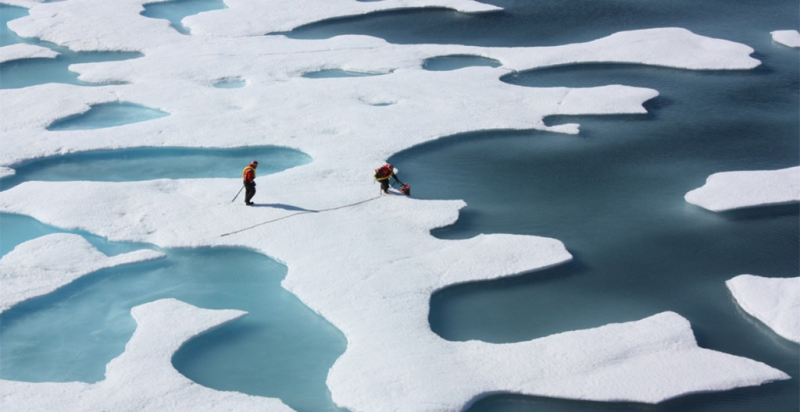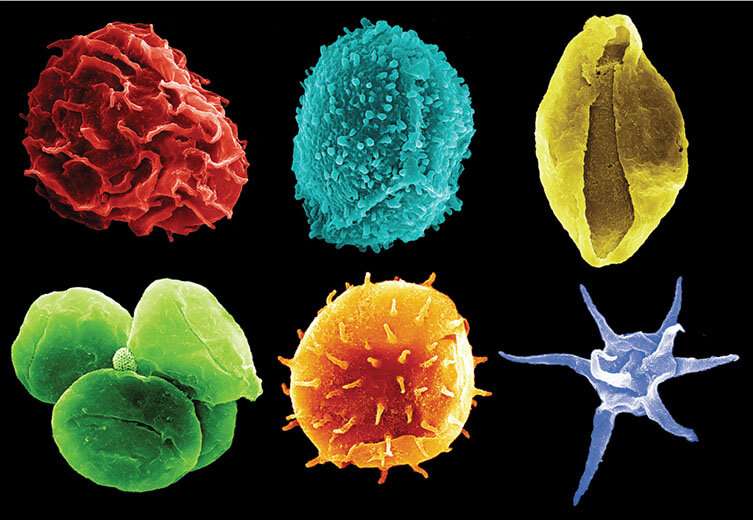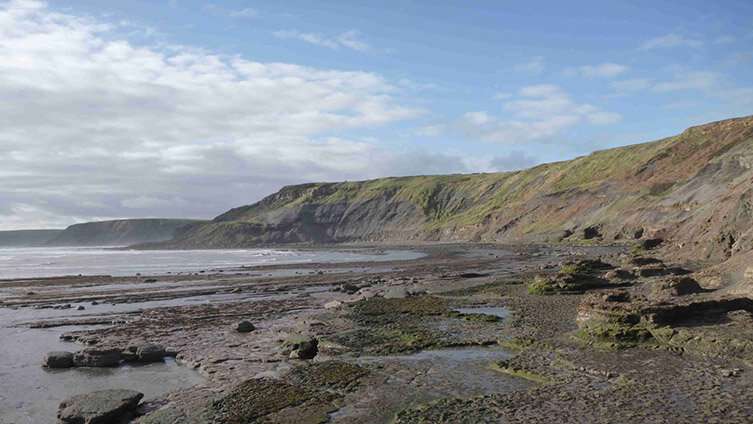Climate catastrophe has happened before—and it's teaching us about the future

Predicting how animals, plants and humans might cope with climate catastrophe over the coming decades and centuries is not an easy task. Studying the effects of past changes can guide us.
Now, researchers know more about how life on land might eventually be affected as a new paper is published in Nature Geoscience.
Scientists at the Natural History Museum, the Swedish Museum of Natural History and the University of Florence have been looking into what happened during a global warming event of 7°C that took place 183 million years ago, in the time of the dinosaurs.
It was time of significant change that was first recognized in marine rocks, and which researchers call the Toarcian Oceanic Anoxic Event (T-OAE).
A 7°C difference in air or water temperatures may not sound huge, but it also represents the same difference between the last ice age and the present day.
For many animals and plants, 7°C is the difference between life and death. Living organisms are often adapted to live in a specific range of temperatures, so a sudden change can be too much to handle.
This period of warming has been studied frequently, but almost all research has focused on life in the ocean, with less known about what happened on land.
The latest research has found that, like the oceans, forests were hit hard by the warmer temperatures.
Prof Richard Twitchett, a research leader at the Museum, says, "This early Jurassic global warming event, 183 million years ago, can help us inform predictions of the future.
"Our study shows that rapid global warming can have major and long-lasting impacts on land and in the sea at the same time.

"Understanding how our planet's different ecosystems responded to past episodes of natural change is relevant for understanding the impacts of current, anthropogenic, environmental change."
What caused the Jurassic warming event?
The warming event was caused by volcanoes that released huge amounts of the carbon dioxide into the atmosphere.
The volcanoes were in what are today South Africa and Antarctica, and the eruptions affected Earth's climate for several hundred thousand years.
This carbon dioxide had the same greenhouse effect that the world is currently experiencing, trapping heat in the atmosphere. Temperatures all over the world rose by 4°C—7°C.
To put that in a modern context, global temperatures have been rising at a rate of 1.7°C per century since 1970. However, many regions are already experiencing more warming than the global average.
Volcanoes were the cause of the Jurassic's changing climate, but today the rapid rise of carbon dioxide in the atmosphere is caused mainly by human activity.
Consequences on land and in the sea
On land, about half of the plant species that were investigated disappeared during the Jurassic warming event. Lush, highly biodiverse forests of conifers and ferns were replaced by vegetation dominated by a few plant species adapted to the hot and dry 'disaster' conditions of the warming event.
In the Jurassic, many different conifers, ferns and cycads were common, but during the warming event only a few species which were adapted to hot and dry environments dominated the vegetation.

In the oceans, the warming led to massive blooms of algae, possibly fueled by nutrients released by the natural deforestation on land. The decay of these blooms caused a loss of oxygen in the sea. The normal plankton disappeared and many animals went extinct.
Researchers have observed these changes by studying more than 40,000 microscopic fossils of pollen, spores and plankton. They found the fossils in rocks that were formed in the Jurassic Period from the cliffs along the coast of North Yorkshire. The rocks that they studied are one of the best records of this warming event.
By comparing the occurrence of fossils from the time before, during, and after the warming, the researchers could see which plankton in the oceans and plants on land increased or decreased in number.
Prof Richard Twitchett says, "We know a lot about the environmental changes that affected the oceans and marine ecosystems at that time, including the warming-related spread of anoxic dead zones, the extinctions and changes in the body size of marine animals.
"Until now we have known almost nothing about events on land at that same time, and how terrestrial ecosystems were affected by this warming event.
"The marine rocks we studied yielded beautifully preserved fossil spores and pollen of land plants that lived in coastal regions. For the first time we can see how the diverse forest ecosystems collapsed as warming intensified—natural deforestation—and were replaced by a different type of vegetation.
"Fossils of marine plankton in the same samples show us how marine primary producers were also affected at the same time, and suggest that deforestation on land may have impacted the shallow seas."
As temperatures went back to normal, large trees returned but the dominant tree species were different, showing that climate change had long-lasting effects on forest ecosystems.
Richard adds, "For the first time we can link changes in the sea and on land together from the same samples to get a much better, holistic view of environmental change. The advantage of studying these past events is that they show not only how ecosystems were affected by warming, but also how they recovered afterwards."
More information: Sam M. Slater et al. Substantial vegetation response to Early Jurassic global warming with impacts on oceanic anoxia, Nature Geoscience (2019). DOI: 10.1038/s41561-019-0349-z
Journal information: Nature Geoscience
Provided by Natural History Museum





















